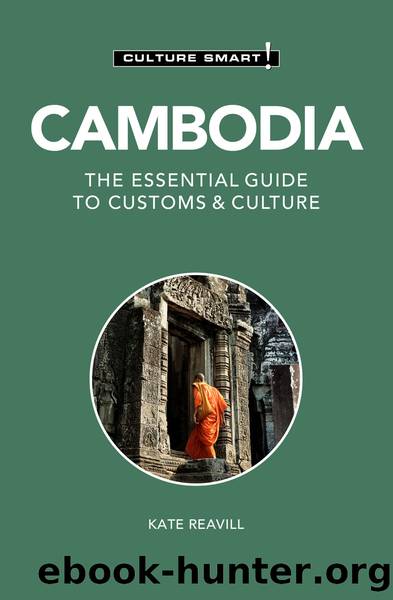Cambodia - Culture Smart! by Kate Reavill

Author:Kate Reavill
Language: eng
Format: epub
Publisher: Kuperard
Published: 2022-05-15T00:00:00+00:00
EDUCATION
Education in Cambodia basically ceased under the Khmer Rouge. Educated and qualified people, including teachers and monks, were targeted and killed or sent to labor camps where many died. By the end of the Khmer Rouge period, over 75 percent of all educators had died or had fled the country. Beginning in 1979, the PRK government, hampered by continuing civil strife, began to revive the education system, and now offers education from preschool through to college. The main challenges faced by Cambodiaâs education system today include poorly educated, poorly trained, and poorly paid teachers, large class sizes, and outdated teaching methods, with great variation across the country.
Many expats who arrive looking for work in Cambodia take on teaching roles that encompass a range of subjects and ages, even if they have no qualifications. While this means that the quality of teaching in Cambodia can vary considerably, and that schoolchildren may experience a higher turnover of teachers than is ideal, it does provide an important and otherwise unfilled need for teachers who can also expose Cambodian children to Western teaching methods and help them improve their English language skills. Generally, the more highly regarded schools require a TEFOL/TESOL Certificate, a degree, and if possible, a PGCE qualification. TEFL/TESOL courses can be completed online for a fee.
The constitution prescribes free compulsory education, but its delivery is not monitored particularly closely and corruption, poverty, and family dependence on child labor, especially in rural areas, has resulted in uneven provision and attendance. Enrollment has improved in recent years; according to UNICEF, the number of children enrolled in preschool programs more than doubled from 2007 to 2020, and the number of children enrolled in primary education increased from 82 percent in 1997 to over 97 percent by 2018.
Traditionally, Cambodian education (literature, religion, and skills), took place in wats and was offered exclusively to boys. Since reform in 1996, there is now twelve years of schooling available to both boys and girlsâsix years for primary education (grade 1 to 6) and six years for secondary general education (grade 7 to 12). Secondary education consists of three years each for lower secondary education (grade 7 to 9) and upper secondary education (grade 10 to 12).
Currently, more than 10 percent of children do not attend school at all and nearly 20 percent of girls donât continue to high school. At upper level, the shortage of qualified teachers and adequate places in classes has led to corruption, with parents paying bribes to examiners and obtaining college places. Nevertheless, progress is being made toward improving the provision and standard of government education.
For those who can afford it, there is access to private education and institutions overseas. Chinese schools are increasingly popular in major cities, where wealthier parents encourage their children to learn Mandarin, while others send their children abroad for education.
More and more international schools are opening in Phnom Penh, Siem Reap, Kampot, Kep, Battambang, and other towns. The school day usually starts at around 8:00 a.m. with a two-hour break for lunchâusually from 11:00 a.
Download
This site does not store any files on its server. We only index and link to content provided by other sites. Please contact the content providers to delete copyright contents if any and email us, we'll remove relevant links or contents immediately.
China Rich Girlfriend by Kwan Kevin(3900)
The Silk Roads by Peter Frankopan(3767)
Annapurna by Maurice Herzog(2845)
Hot Thai Kitchen by Pailin Chongchitnant(2815)
Full Circle by Michael Palin(2780)
Okonomiyaki: Japanese Comfort Food by Saito Yoshio(2391)
City of Djinns: a year in Delhi by William Dalrymple(2138)
The Ogre by Doug Scott(2117)
Photographic Guide to the Birds of Indonesia by Strange Morten;(2091)
Tokyo by Rob Goss(2021)
Vietnam, Cambodia, Laos & Northern Thailand by Lonely Planet(2015)
Tokyo Geek's Guide: Manga, Anime, Gaming, Cosplay, Toys, Idols & More - The Ultimate Guide to Japan's Otaku Culture by Simone Gianni(1949)
Discover China Travel Guide by Lonely Planet(1867)
Everest the Cruel Way by Joe Tasker(1828)
China (Lonely Planet, 11th Edition)(1799)
Lonely Planet China(1758)
China Travel Guide by Lonely Planet(1741)
Top 10 Dubai and Abu Dhabi by DK Travel(1718)
Iranian Rappers And Persian Porn by Maslin Jamie(1712)
